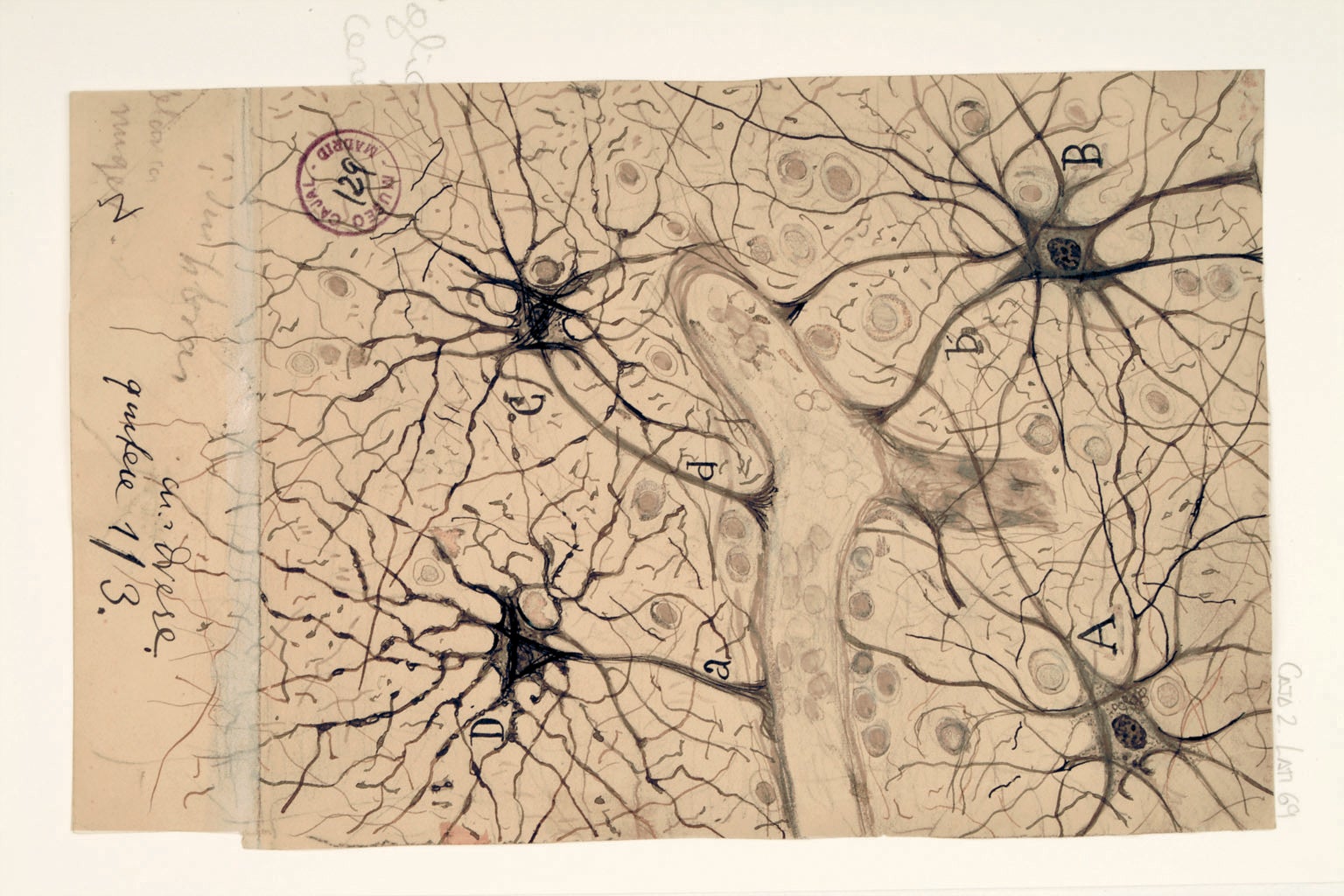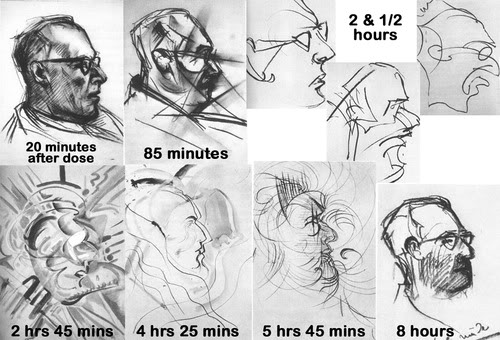Week 7: Neuroscience + Art
Neuroscience + Art
The mysteries of neuroscience are sought after by every field. The study of consciousness as well as unconscious processes has guided this exploration and manipulation such as the use of psychedelic drugs that alter the neurophysical. As is described by Frazzetto, this has led to the formation of novel areas of study such "neuroeconomics, neurotheology and neuroeducation... we are witnessing the rise of a neuroculture (or neurocultures)," (815).
This integration of neuroscience in art is a more expected emergence. Since its foundation, the father of neuroanatomy Santiago Ramón y Cajal used art to sketch the network-like structure of neurons, which he described as "butterflies of the soul". This concept is still used in projects that use butterflies overlayed on fMRIs to depict the art inherent in the science.
 |
| Butterflies of the Soul: Santiago Ramón y Cajal |
Similarly, the "BrainBow" project is another example of how art enables the study of neurons. Scientists induced different neurons to express differently colored fluorescent proteins to help differentiate between the complex entanglement of the network. The results were an explosion of interconnected blasts of color, and images produced by this method have not only allowed the advanced study of neural networks but have also been used as art displays and garnered much appreciation and reward.
 |
| Dentate gyrus: BrainBow |
Although neuroanatomical structures serve as art pieces themselves, they have also been manipulated to help artists produce unique creations. Psychedelics such as LSD and other neurochemicals have been used to alter artistic expressions and forms over many years, including in experimentation on its affects by the government.
 |
| Portrait Artist on LSD |
Thus, neuroscience is inherenetly linked to all aspects of our lives, but its deep value as art is evident in sketches from centuries ago and continues to be prevalent in technological manipulations seen today. Our brains help us produce art, and, in turn, art allows us to learn about its science.
Works Cited
Cortés, Michelle Santiago. “How Psychedelics Can Help Unlock Creativity.” Artsy, 21 Dec. 2018, www.artsy.net/article/artsy-editorial-psychedelics-offer-artists-creative-boost.
Frazzetto, Giovanni, and Suzanne Anker. “Neuroculture.” Nature Reviews Neuroscience, vol. 10, no. 11, 2009, pp. 815–821, https://doi.org/10.1038/nrn2736.
Jiang, Kevin. “Butterflies of the Soul.” Butterflies of the Soul | Harvard Medical School, 30 Mar. 2018, hms.harvard.edu/news/butterflies-soul.
Vesna, Victoria. Lecture. “Neuroscience + Art, Consciousness and Memory (Part 1).
DESMA 9, Web. 17 May 2023, UCLA.
Weissman, Tamily A, and Y Albert Pan. “Brainbow: New Resources and Emerging Biological Applications for Multicolor Genetic Labeling and Analysis.” Genetics, vol. 199, no. 2, 2015, pp. 293–306, https://doi.org/10.1534/genetics.114.172510.
Image/Video Citations
Ehrlich, Benjamin. “The Father of Modern Neuroscience Discovered the Basic Unit of the Nervous System.” Scientific American, 1 Apr. 2022, www.scientificamerican.com/article/the-father-of-modern-neuroscience-discovered-the-basic-unit-of-the-nervous-system/.
Lichtman, and Livet. “Brainbow.” Harvard University Brain Tour, 30 Sept. 2016, braintour.harvard.edu/archives/portfolio-items/brainbow.
Notdudeonthebeach2, director. Watch What Happens When a Portrait Artist Takes LSD. YouTube, 14 Oct. 2010, https://youtu.be/n4Sb8jCJUTw. Accessed 17 May 2023.
Comments
Post a Comment